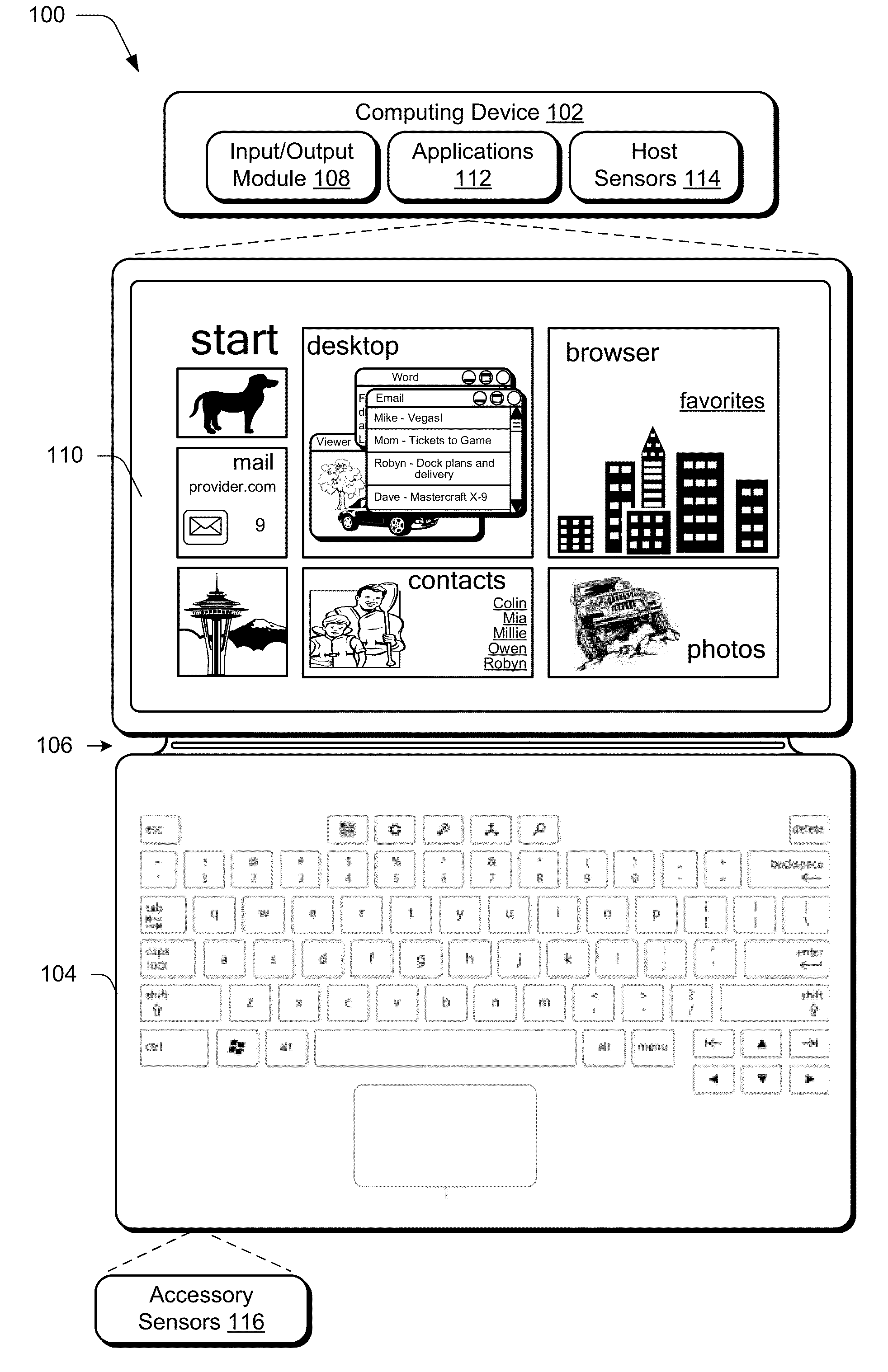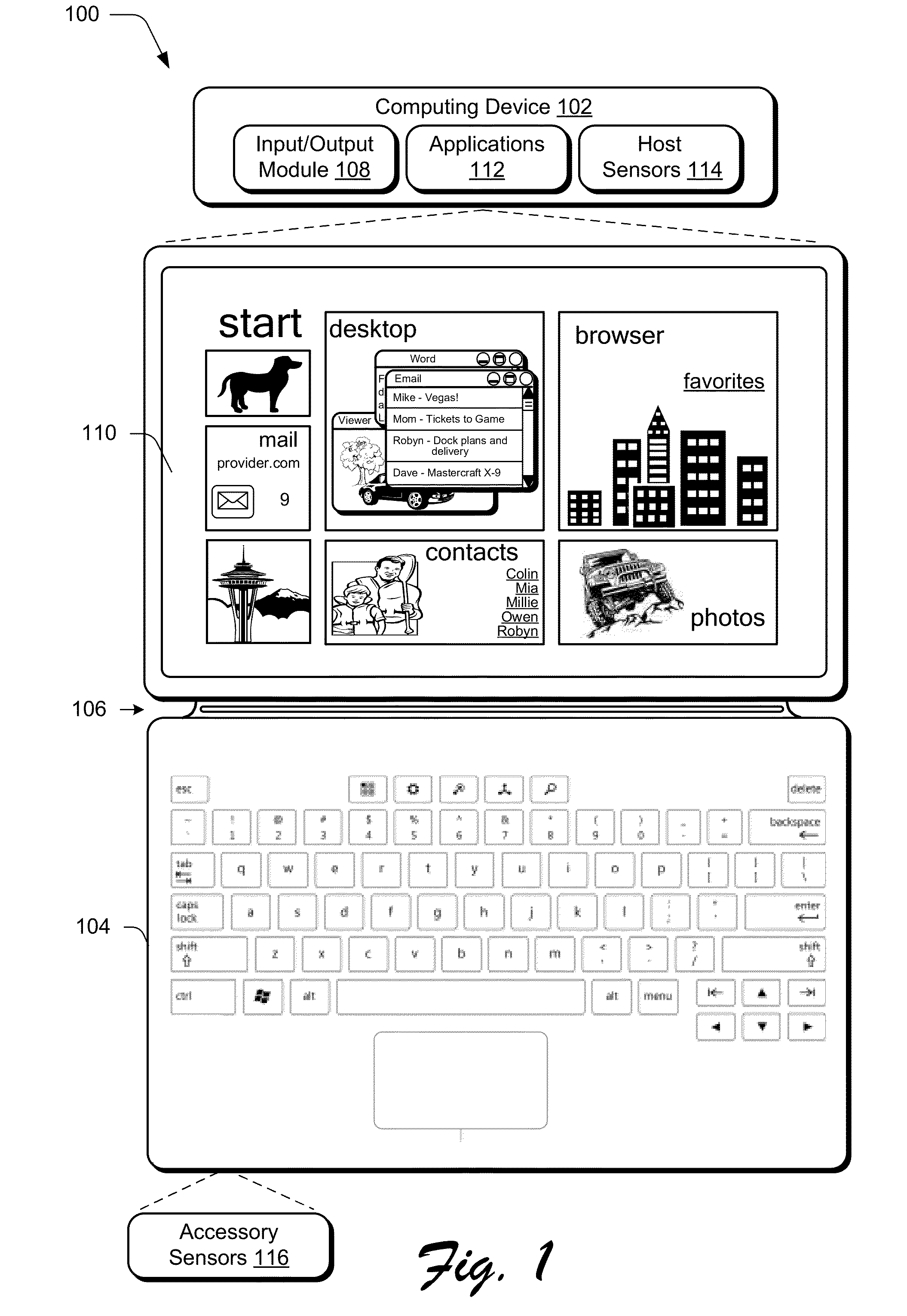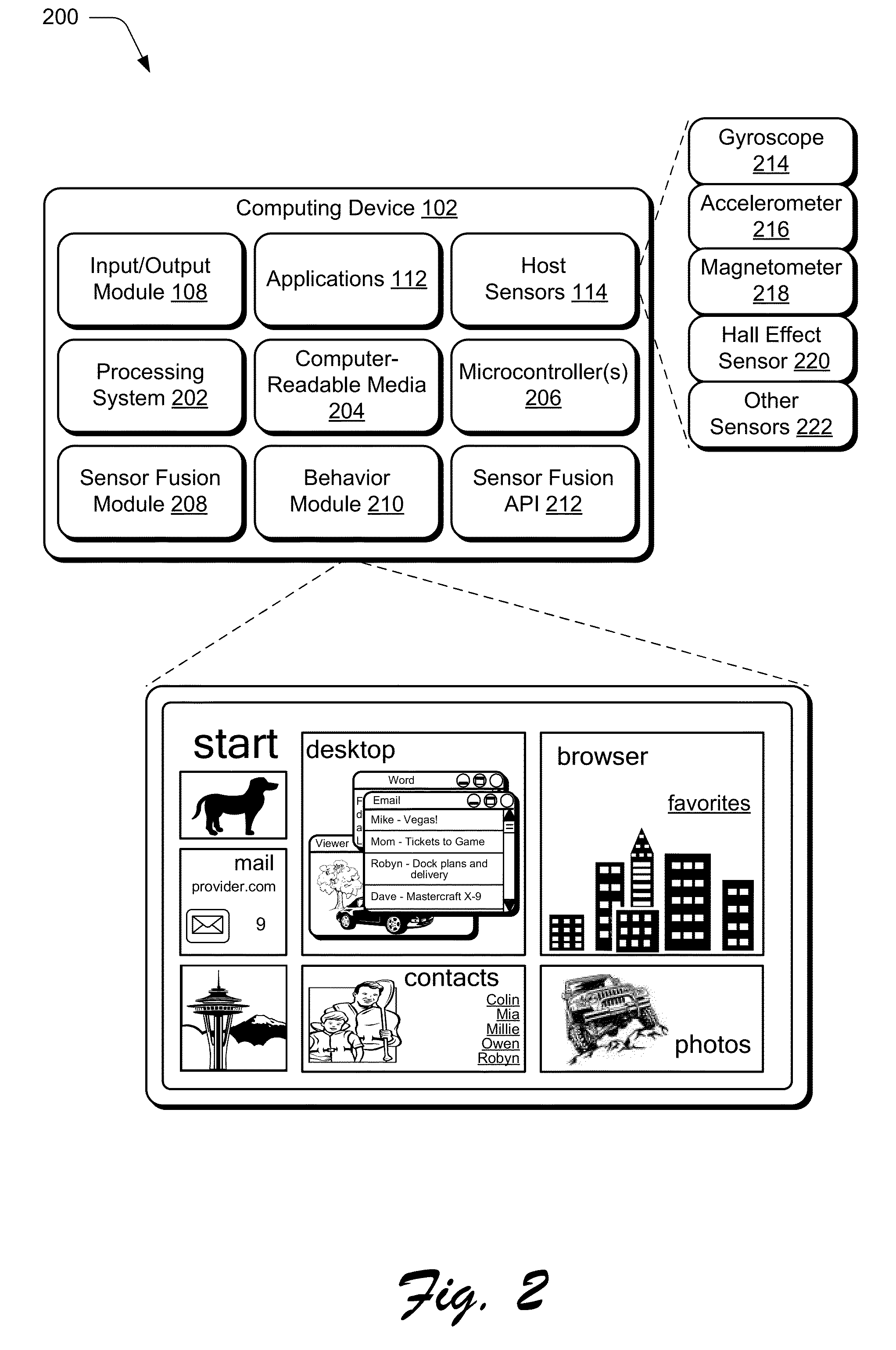Sensor Fusion Algorithm
a technology of fusion algorithm and sensor, which is applied in the direction of electric controller, electric apparatus casing/cabinet/drawer, electric controller, etc., can solve the problems that the action of accessories may sometimes interfere with the operation of the host computing device, and the user experience may be adversely affected
- Summary
- Abstract
- Description
- Claims
- Application Information
AI Technical Summary
Benefits of technology
Problems solved by technology
Method used
Image
Examples
example procedures
[0061]The following discussion describes sensor fusion algorithm techniques that may be implemented utilizing the previously described systems and devices. Aspects of each of the procedures may be implemented in hardware, firmware, software, or a combination thereof. The procedures are shown as a set of blocks that specify operations performed by one or more devices and are not necessarily limited to the orders shown for performing the operations by the respective blocks. In portions of the following discussion, reference may be made to the example operating environment 100 of FIG. 1, the example devices of FIGS. 2-3, and the example orientation shown in FIGS. 4-10, respectively.
[0062]FIG. 11 depicts an example procedure 1100 in which an orientation of an accessory relative to a host is computed. In at least some embodiments, the procedure may be performed by a suitably configured computing device, such as the example computing device 102 of FIG. 2 that includes or otherwise make us...
PUM
| Property | Measurement | Unit |
|---|---|---|
| angle | aaaaa | aaaaa |
| mechanical | aaaaa | aaaaa |
| flexible | aaaaa | aaaaa |
Abstract
Description
Claims
Application Information
 Login to View More
Login to View More - R&D
- Intellectual Property
- Life Sciences
- Materials
- Tech Scout
- Unparalleled Data Quality
- Higher Quality Content
- 60% Fewer Hallucinations
Browse by: Latest US Patents, China's latest patents, Technical Efficacy Thesaurus, Application Domain, Technology Topic, Popular Technical Reports.
© 2025 PatSnap. All rights reserved.Legal|Privacy policy|Modern Slavery Act Transparency Statement|Sitemap|About US| Contact US: help@patsnap.com



